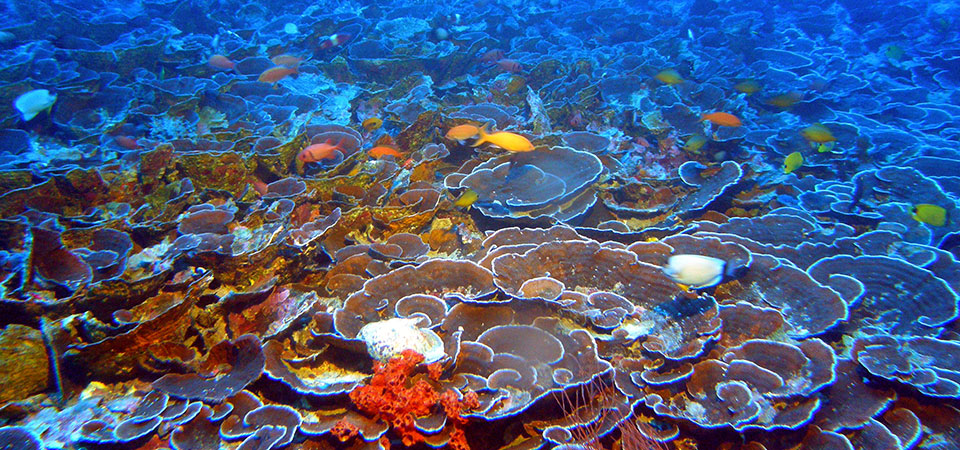Hawaiian Deep Coral Reefs Reveal Unique Species
Discoveries show mesophotic reefs may serve as refuge for some species.

"Coral Reef Twilight Zone"
This study explored Hawaii's deep coral reefs known as mesophotic coral ecosystems. Mesophotic coral ecosystems, such as this one found at 230 feet in Maui's 'Au'au Channel, are populated with many of the same fish species found on shallow reefs. Photo credit: NOAA and Hawaii Undersea Research Laboratory
NOAA-supported scientists working in the Hawaiian Archipelago have characterized the most extensive deep coral reefs on record. They found several large areas with 100 percent coral cover and concluded that deep coral reefs have twice as many species that are unique to Hawaii than their shallow-water counterparts.
Of the fish species documented on these deep coral or mesophotic reefs, 43 percent were endemic, species found only in the Hawaiian Islands, which is more than double the 17 percent of endemic species found on shallow Hawaiian reefs.
At the northern end of the archipelago in the recently expanded Papahānaumokuākea Marine National Monument, levels of endemism were nearly 100 percent, the highest level of endemism recorded from any marine ecosystem on Earth. These findings could offer further insight into the monument’s management.
In Maui ’s ʻAu‘au Channel, scientists discovered the largest uninterrupted mesophotic coral ecosystem ever recorded, extending more than three square miles at approximately 160-300 feet deep and including areas of 100 percent coral cover.
Get Social
More Information
Did you know?
Mesophotic coral ecosystems, the deepest of the light-dependent coral reef communities, lie well beyond the limits of conventional scuba diving and are among the most poorly explored marine habitats on Earth. Scientists used a combination of submersibles, remotely operated vehicles, and technical diving to study these difficult-to-reach environments.
